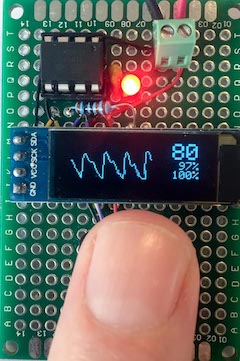Altitude sickness comes in three fundamental kinds: acute mountain sickness, excessive-altitude pulmonary edema and excessive-altitude cerebral edema. Acute mountain sickness is the commonest, as it affects greater than 50 percent of people that ascend greater than 8,000 feet (2,400 meters) in a comparatively quick time span. It's attributable to the decrease ranges of oxygen in the air at excessive elevations; your lungs cannot take in as a lot oxygen as they're used to and your coronary heart and lungs have to work more durable to keep your blood oxygenated. Symptoms of acute mountain sickness include dizziness, fatigue, nausea, complications and issue sleeping. Acute mountain sickness normally goes away within a number of days so long as you remain properly hydrated and stay at the identical altitude till the symptoms go. Among the ways people have historically relieved the signs of mild altitude sickness is thru tea product of the coca leaf. Many workers in Central and South America who spend time at excessive altitudes use coca leaves to alleviate the discomfort. However, coca is a controlled substance in the United States; it is the identical plant that is used to make cocaine. Over-the-counter medications are additionally available for the therapy of altitude sickness. Plus, some individuals like to make use of herbs like gingko bilboa to treat mountain sickness; nevertheless, there's no reliable scientific proof that gingko does anything for altitude sickness. When the symptoms do not go away and intensify, or they embody shortness of breath, elevated heart charge, imbalance, confusion or seizures, it is time to worry. Both high-altitude pulmonary edema and high-altitude cerebral edema might be fatal and BloodVitals test necessitate fast descent to a lower altitude and urgent medical treatment.

Posts from this subject might be added to your day by day e mail digest and your homepage feed. Posts from this matter will be added to your day by day e mail digest and your homepage feed. Posts from this matter will probably be added to your day by day electronic mail digest and your homepage feed. Posts from this writer might be added to your daily e-mail digest and your homepage feed. Posts from this author will probably be added to your daily e-mail digest and your homepage feed. Five years since the first Apple Watch and a full seven years on from Samsung’s Galaxy Gear, we all know what a smartwatch is. We all know that it’s not going to exchange your smartphone anytime quickly, BloodVitals insights that it's going to should be charged on daily basis or two, and that its finest features are for BloodVitals SPO2 device health monitoring and seeing notifications when your telephone isn’t in your hand. Samsung’s newest smartwatch, BloodVitals test the $399-and-up Galaxy Watch 3, does not do something to alter these expectations.
In fact, there isn’t a lot distinction between the Galaxy Watch 3 and any smartwatch that’s come out in the past few years - at least by way of core performance. If you’ve managed to ignore or keep away from smartwatches for the previous half-decade, the Watch three isn’t going to alter your thoughts or win you over. None of that is to say the Galaxy Watch three is a foul smartwatch or even a foul product. Quite the opposite, the Watch 3 fulfills the definition and expectations that we’ve accepted for smartwatches perfectly adequately. It does the things we expect a smartwatch to do - track your activity and supply fast access to notifications - just tremendous. And if you’re an Android (and even better, a Samsung) telephone proprietor looking for a new smartwatch, BloodVitals test the Galaxy Watch 3 is a fantastic decide. The Galaxy Watch three follows Samsung’s tradition of creating a smartwatch look much like a conventional watch, full with a round face.
In truth, BloodVitals test the design is sort of similar to the Gear S3 Classic from 2016: a spherical face with two round pushers on the side. Compared to the Galaxy Watch, its closest predecessor, the Watch three has a less sporty, dressier design that appears to be meant for more everyday put on versus a devoted running watch. The Watch three is also slightly smaller and lighter than the Galaxy Watch. But make no mistake, this is not a small watch. I’ve been testing the larger 45mm variant, and it’s large and thick on my average-sized wrists. Those with small wrists can even possible find the 41mm version too big to put on. If you want huge watches, you’ll be completely satisfied here, but when you’re on the lookout for something sleeker and smaller, the Galaxy Watch Active 2 is a better alternative. Samsung did increase the scale of the display on the 45mm version to 1.4 inches, which is actually fairly massive and makes the watch look even greater on the wrist.
It’s a shiny, colorful show with a pointy resolution that’s easy to see each indoors and out. My only difficulty is that it may be onerous to see the display screen by way of polarized sunglasses, requiring me to turn my arm awkwardly or elevate my shades to examine the time. It additionally has a full-color at all times-on function so you may learn the time with out touching the watch or BloodVitals test waving your arm round, as all smartwatches ought to. You will get both dimension watch in Bluetooth-only or LTE-equipped variations for a reasonable $50 extra; I’ve been testing the Bluetooth model and BloodVitals insights haven’t had any major issues with it staying linked to my Galaxy S20. Perhaps one of the best advantage of the Watch 3 over the Active line is its physically rotating bezel, which you should utilize to scroll through the interface. It’s extraordinarily satisfying and BloodVitals test simple to make use of, and it’s the best solution to navigate a smartwatch that I’ve tried.


